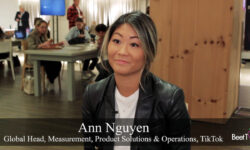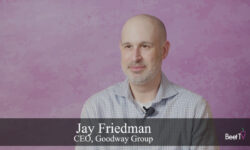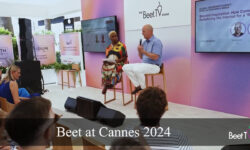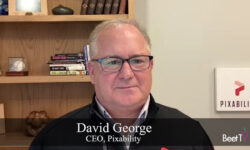LOS ANGELES – Quibi’s short-form dreams may have had a short life – but Roku’s acquisition of the short-lived subscription service’s content library this week means the shows commissioned by Jeffrey Katzenberg and Meg Whitman will get a second life.
The CEO pair failed to make Quibi – which was designed to make short, snackable, high-quality entertainment available over smartphones – a success, with a proposition at $4.99 to $7.99 a month.
Last week, Roku acquired content distribution rights to 75 Quibi-commissioned shows, planning to make them available via its free, ad-supported Roku Channel.
Quibi's big stories are coming soon to a bigger screen for free on The #Roku Channel ➡️ https://t.co/f44RUQHV0i pic.twitter.com/48YSYE2Jd3
— Roku (@Roku) January 8, 2021
Some first-runs
In this video interview with Beet.TV, Rob Holmes, VP of programming at Roku, describes the opportunity.
“More than 75 shows are going to be coming to the Roku Channel,” Holmes says. “A good number of them … this will be the first time that they’re available to this, this scale of audience. There’s over a dozen that are premiering on the Roku Channel for the first time
“This content features some of the best talent out there, both in front of and behind the camera. So something that we think will really resonate with our users.
Sticking to format
Quibi is so named for its unique format of delivering entertainment in “quick bites”. That “snackable” idea first emerged in mobile – but Roku’s Holmes says he plans to maintain the format on the large-screen TV.
“We’re going to be presenting the content in the same way that it was made available on the Quibi service, in terms of being episodic content,” he says.
“Fundamentally, it’s TV. It was created as TV content, it’ll play really well on TV.
“There’s this great kind of propulsion and linkage from episode to episode – they were really made as these type packages. It’s really compelling to watch and there’s this strong drive to sort of see the next chapter to see the next episode.”
More than 75 shortform Quibi shows will now have a home, with Roku acquiring the content library that a source values at less than $100 million. Details: https://t.co/yTzjn0vdY5 pic.twitter.com/cl5okBnN3I
— The Hollywood Reporter (@THR) January 8, 2021
AVOD emergence
Holmes thinks that won’t just please viewers, it will also satisfy advertisers.
“I think it will be phenomenal from an ad-supported experience,” he says. “It gives it a really nice spot to break, but a really compelling reason to stay through the ads and come back for the next episode.”
Despite offering apps from a plethora of TV and video services, Roku Channel is Roku’s own horse in the race, offering over 40,000 movies and TV episodes for free and becoming an ad-supported VOD (AVOD) provider in its own right. Quibi’s content could light up that opportunity further – and Holmes thinks the time is right for ad-supported VOD.
“As much as great content is the reason SVOD, free is a really compelling price,” he says. “People are able to supplement their subscription viewing with free, ad-supported viewing.
Learn more about today’s announcement ➡️ https://t.co/eoATJm0Xmw pic.twitter.com/qX4d02jJRu
— Roku (@Roku) January 6, 2021
Platform growth
A veteran of the TV dongle wars, Roku has emerged a winner. New NPD data showed Roku’s operating system remained the number one in the US (38% of market share) and Canada (31%) through 2020.
Roky also announced two user data points this week:
- Active user accounts grew by 14 million (37%) in 2020 to 21.2 million.
- Consumption reached 17 billion streaming hours in Q4, 58.7 billion hours in 2020 – a 55% increase year-on-year.
Roku Channel is Roku’s own content space within its Roku OS platform, which even gained its own TV-like electronic programme guide (EPG) for live discovery last year.
Roku says Roku Channel reached 61.8 million people in Q4 2020, doubling its household reach year-on-year.














































